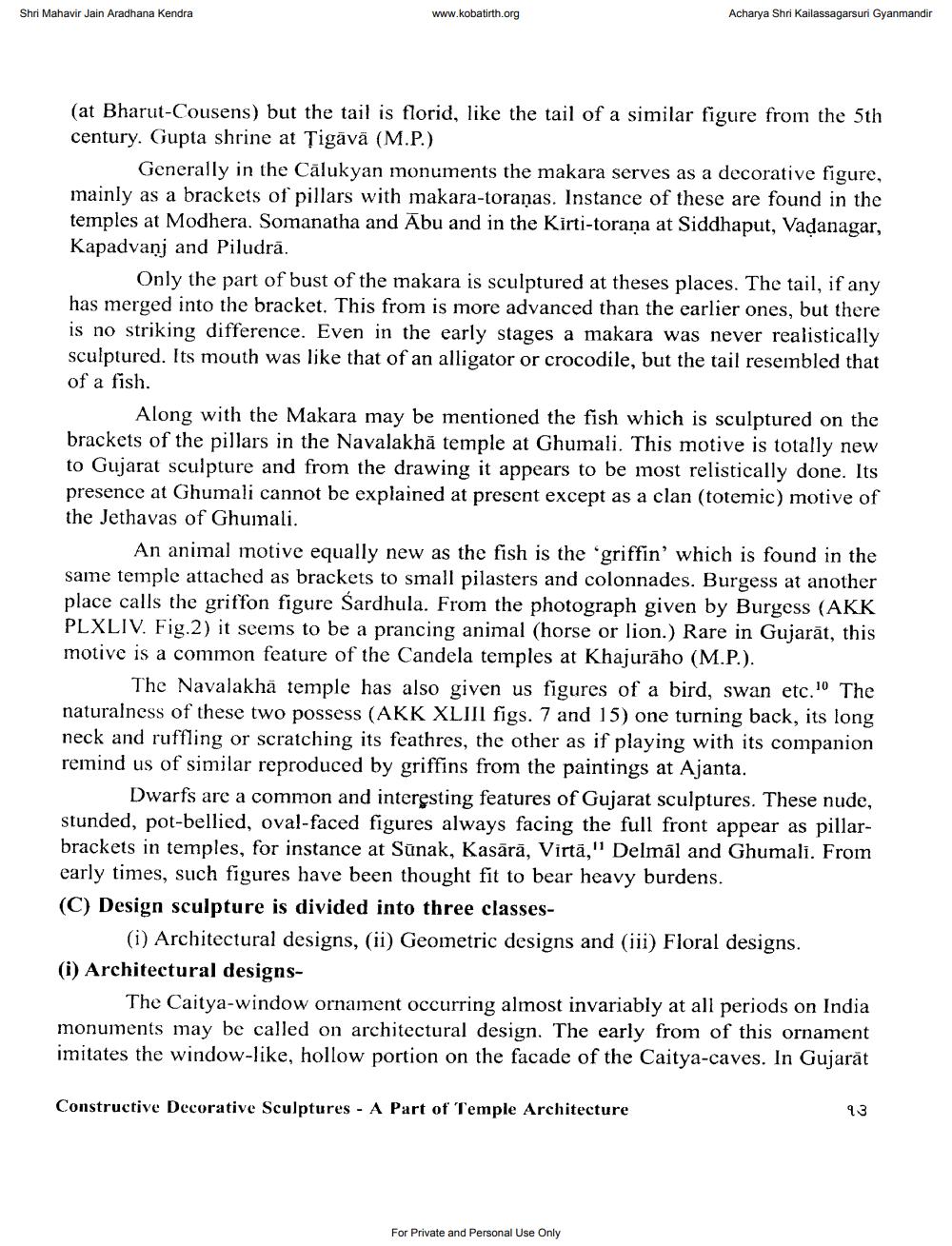________________
Shri Mahavir Jain Aradhana Kendra
www.kobatirth.org
Acharya Shri Kailassagarsuri Gyanmandir
(at Bharut-Cousens) but the tail is florid, like the tail of a similar figure from the 5th century. Gupta shrine at Tigävä (M.P.)
Generally in the Cālukyan monuments the makara serves as a decorative figure, mainly as a brackets of pillars with makara-toraņas. Instance of these are found in the temples at Modhera. Somanatha and Abu and in the Kirti-torana at Siddhaput, Vadanagar, Kapadvanj and Piludrā.
Only the part of bust of the makara is sculptured at theses places. The tail, if any has merged into the bracket. This from is more advanced than the earlier ones, but there is no striking difference. Even in the early stages a makara was never realistically sculptured. Its mouth was like that of an alligator or crocodile, but the tail resembled that of a fish.
Along with the Makara may be mentioned the fish which is sculptured on the brackets of the pillars in the Navalakhă temple at Ghumali. This motive is totally new to Gujarat sculpture and from the drawing it appears to be most relistically done. Its presence at Ghumali cannot be explained at present except as a clan (totemic) motive of the Jethavas of Ghumnali.
An animal motive equally new as the fish is the 'griffin' which is found in the same temple attached as brackets to small pilasters and colonnades. Burgess at another place calls the griffon figure Sardhula. From the photograph given by Burgess (AKK PLXLIV. Fig.2) it seems to be a prancing animal (horse or lion.) Rare in Gujarāt, this motive is a common feature of the Candela temples at Khajurāho (M.P.).
The Navalakha temple has also given us figures of a bird, swan etc. The naturalness of these two possess (AKK XLIII figs. 7 and 15) one turning back, its long neck and ruffling or scratching its feathres, the other as if playing with its companion remind us of similar reproduced by griffins from the paintings at Ajanta.
Dwarfs are a common and interesting features of Gujarat sculptures. These nude, stunded, pot-bellied, oval-faced figures always facing the full front appear as pillarbrackets in temples, for instance at Sūnak, Kasārā, Virtā," Delmāl and Ghumali. From early times, such figures have been thought fit to bear heavy burdens. (C) Design sculpture is divided into three classes
(i) Architectural designs, (ii) Geometric designs and (iii) Floral designs. (i) Architectural designs
The Caitya-window ornament occurring almost invariably at all periods on India monuments may be called on architectural design. The early from of this ornament imitates the window-like, hollow portion on the facade of the Caitya-caves. In Gujarāt
Constructive Decorative Sculptures - A Part of Temple Architecture
૧૩
For Private and Personal Use Only




